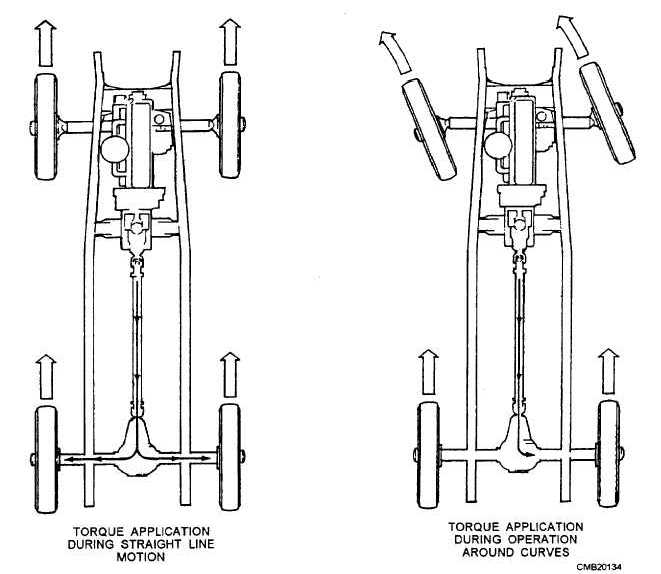differential are posi-traction, sure-grip, equal-lock, and no-spin.
Clutch Pack Limited Slip Differential
The clutch pack limited slip differential (fig. 5-17) uses a set of friction discs and steel plates to lock the axles together whenever one drive wheel experiences uncontrolled slippage. The friction discs are sandwiched between the steel plates inside the differential case. The friction disc is splined and turns with the differential side gears. The steel plates turn with the differential case.
Springs (bellville springs, coil springs, or leaf springs) force the friction disc and steel plates together. As a result, both rear axles try to turn with the differential case.

Figure 5-16. - Differential operation.
Spring force and thrust action of the spider gears applies the clutch pack. Under high torque conditions, the rotation of the differential pinion gears PUSHES OUT on the axle side gears. The axle side gears then push on the clutch discs. This action helps lock the disc and keeps both wheels turning.
However, when driving normally, the vehicle can turn a comer without both wheels rotating at the same speed. As the vehicle turns a comer, the inner drive wheel must slow down. The unequal speed between the side gears causes the side gear pinions to walk around the side gears. This walking will cause the outer axle shaft to rotate faster than the differential case, allowing the pinion shaft on the side to slide down a V-shaped ramp. This action releases the outer clutches causing the clutch pack to slip when the vehicle is turning.
Continue Reading